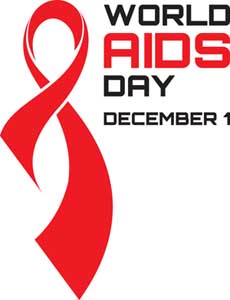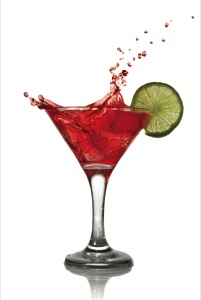
With a Bush victory and a promise of a “kinder, gentler nation” taking shape, World AIDS Day was launched. The first official World AIDS Day debuted Dec. 1, 1988, after a long, devastating winter under the Reagan regime. The idea, hatched in August 1987 by James W. Bunn and Thomas Netter, two public information officers for the Global Programme on AIDS at the World Health Organization in Geneva, Switzerland was then pitched to Dr. Jonathan Mann, director of the Global Programme on AIDS (now known as UNAIDS). Dr. Mann liked the concept, approved it, and agreed with the recommendation that the first observance of World AIDS Day should be Dec. 1, 1988.
This prerogative has widely been lauded as a success though there have been some hiccups along the way. In 2005, the year of ‘Stop AIDS. Keep The Promise,’ Swaziland, with the world’s highest rate of HIV, cut AIDS Day events, and South Africa’s health minister publicly refused to back anti-retroviral drugs. And in 2009, in preparation for World AIDS Day, the German “das Comitee” on behalf of an AIDS Awareness committee within Germany funded a graphic AIDS campaign titled “AIDS is a mass murderer.” All those who participated in creating this commercial campaign volunteered to do so in order to help make it ready for World AIDS Day 2009. The ads compare the AIDS scourge which has taken the lives of millions of people with some of the vilest murderers of our time such as Adolf Hitler, Josef Stalin and Saddam Hussein. (YouTube pulled the video but you can see it at LGBTweekly.com .)
The central thrust of the program, now widely known, is a global initiative to raise awareness, fight prejudice, and improve education about HIV, the virus that causes AIDS. And while one can argue about its successes and/or failures – 36 million people died from AIDS between 1981 and 2012 while another 33 million or so are living with HIV – what one cannot argue is that the struggle to combat the virus remains as vigilant as ever.
Each year, for the last 28 years, the organization that sponsors World AIDS Day, the World Health Organization (WHO), picks a theme that befits the progress, as well as the lack thereof, that the collective community faces. Some themes have even been part of a larger folio such as the ‘Stop AIDS’ themes which ran consecutively for four years between 2005-2008.

For this year’s theme, we have ‘Leadership. Commitment. Impact.’ It’s a broadly designed construct that hopes to foster dialog and understanding in a climate of increasing complacency about the risks of HIV/AIDS. As President Barack Obama pointed out in his official presidential proclamation last year, a tradition that started in 1995 under President Bill Clinton, “HIV still affects specific populations disproportionately across our country. Certain individuals – including gay and bisexual men, black women and men, Latinos and Latinas, people who inject drugs, transgender women, young people and people in the Southern United States – are at greater risk for HIV, and we must target our efforts to reduce HIV-related health disparities and focus increased attention on highly vulnerable populations.”
Adding to that sobering reality was Dr. Anthony Faucci’s statement last year that, “We need to intensify our efforts to connect infected and at-risk people with needed health services to treat or prevent HIV infection. If all people infected with HIV were made aware of their status and began receiving consistent treatment and medical care, most new infections in the United States could be prevented. Additionally, connecting people to the “prevention continuum,” in which people at high-risk for HIV infection are regularly tested, counseled and provided a variety of prevention options, could reduce the spread of the virus even further.”
But it’s important to recognize what should be done with what is being done. There is no question that enormous progress has been made both within and outside the LGBTQ community. The stigma has largely, though by no means completely, been eradicated. The self-loathing which crippled the community’s ability to respond in the early days of the pandemic is also largely gone. And most importantly, a positive test for HIV no longer equates to a death sentence. With the advent of PReP and a massive education campaign, today’s sexually active youth are at the pinnacle of what we know about and how to treat HIV/AIDS.
But work remains. To that end, the San Diego Human Dignity Foundation (SDHDF) has planned an event for Thursday, Dec. 1 called Bar AIDS. The fundraiser, modeled after the highly successful Dining Out For Life campaign, bills itself as a symbolic toast to the defeat of all new HIV infections. “Join Bar AIDS San Diego and “raise your glass” to the end of new HIV infections in San Diego County. On this day, participating bars, nightclubs, coffee shops, and juice bars will be donating 25 percent or more of the day’s earnings to the San Diego HIV Funding Collaborative (SDHFC), which supports HIV/AIDS services throughout San Diego County.” (Ian Fink, both the spokesman for the SDHDF as well as the head of the San Diego HIV Funding Collaborative was unavailable for comment for this article.)

And according to the site, “the San Diego HIV Funding Collaborative has a vision of no new HIV infections by the year 2020. With your help we can make this vision a reality! Tools to prevent the spread of HIV are available, and by partnering with local health agencies and progressive clinics we can get these resources into the right hands. Beneficiaries include: Christie’s Place, Family Health Centers SD, Fraternity House, Mama’s Kitchen, North County LGBTQ Resource Center, San Diego Volunteer Lawyers Program, San Diego Youth Services, San Ysidro Health Centers, Stepping Stone of San Diego, Being Alive and the Vista Community Clinic.”
It might seem strange to some to host a fundraiser set in the very milieu where HIV was so successfully spread; Gay bars were – and to some extent still are – the perfect venue where inhibitions are lost and risk-taking is prone to increase. But in many ways it makes sense. For the greater community, AIDS has lost some of its cache to other but equally devastating diseases such as breast cancer and ALS. And today’s youth are cushioned against the blow of HIV as scientific advances and drug regimens have taken some of the bite out of the disease. But for those who are most at risk and whose lives are, unfairly or not, indelibly linked to HIV/AIDS, going into one of the social ground zeros of the LGBTQ community makes perfect sense.
For more information, or to become a sponsor or ambassador visit baraidssd.org











